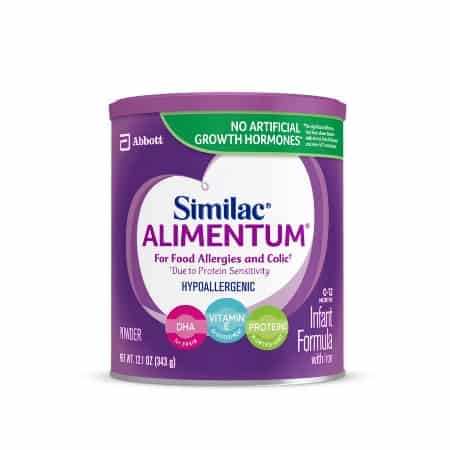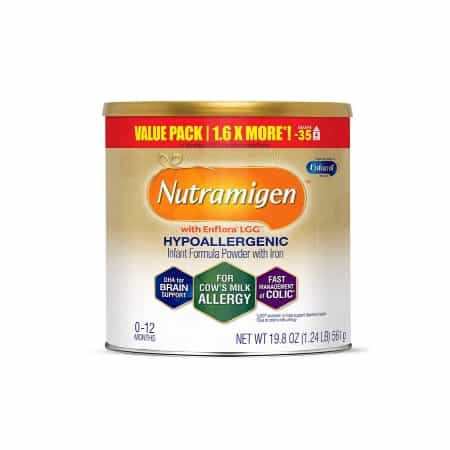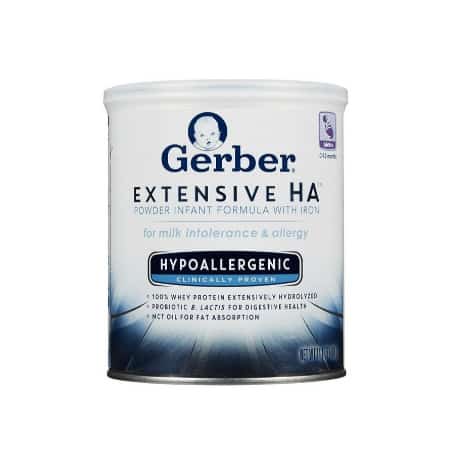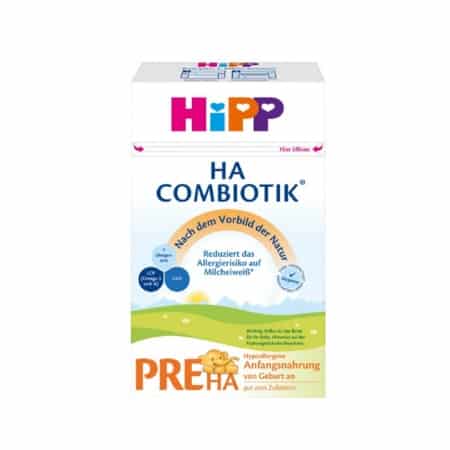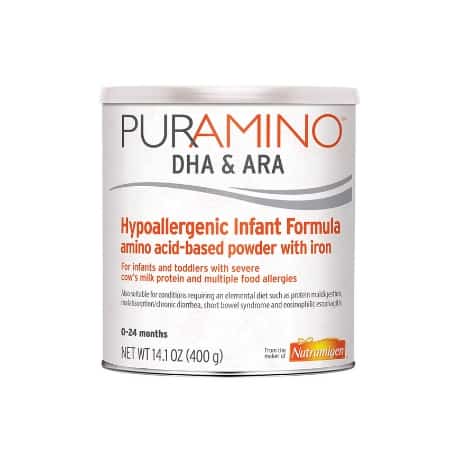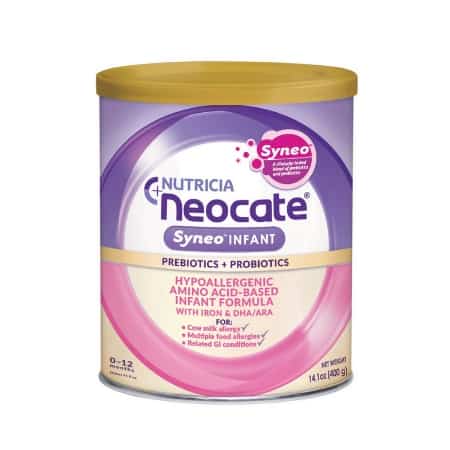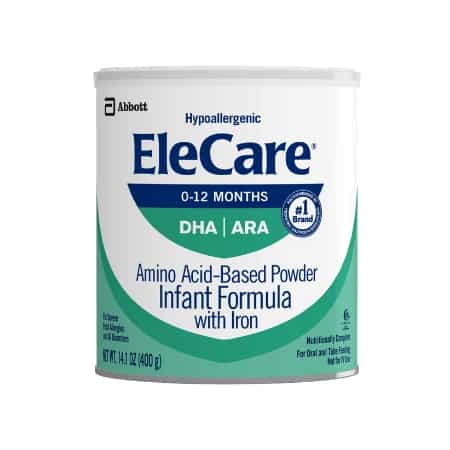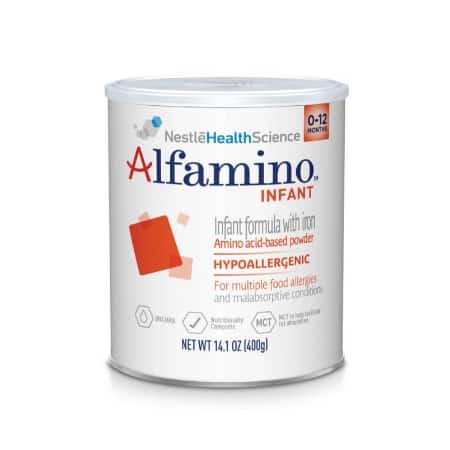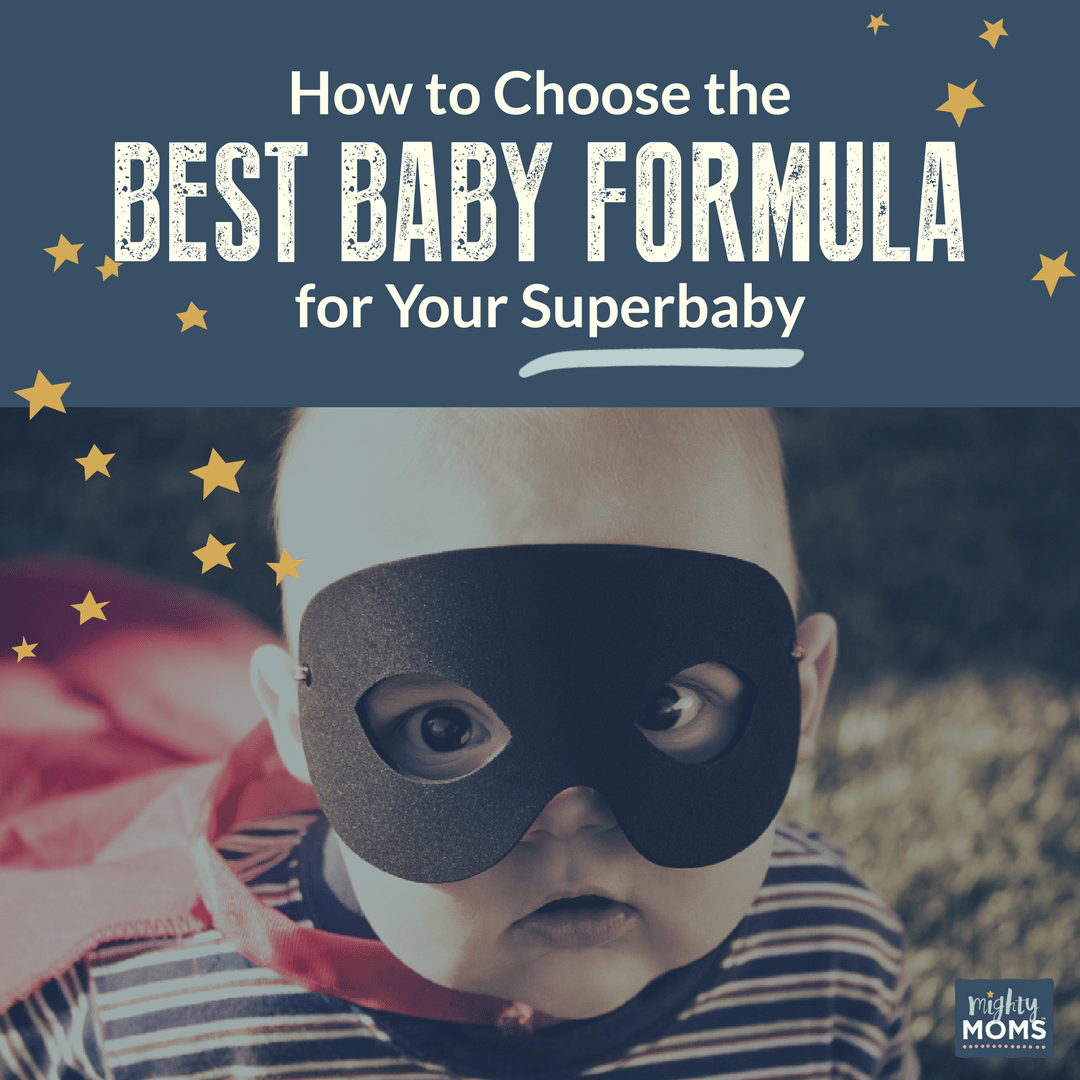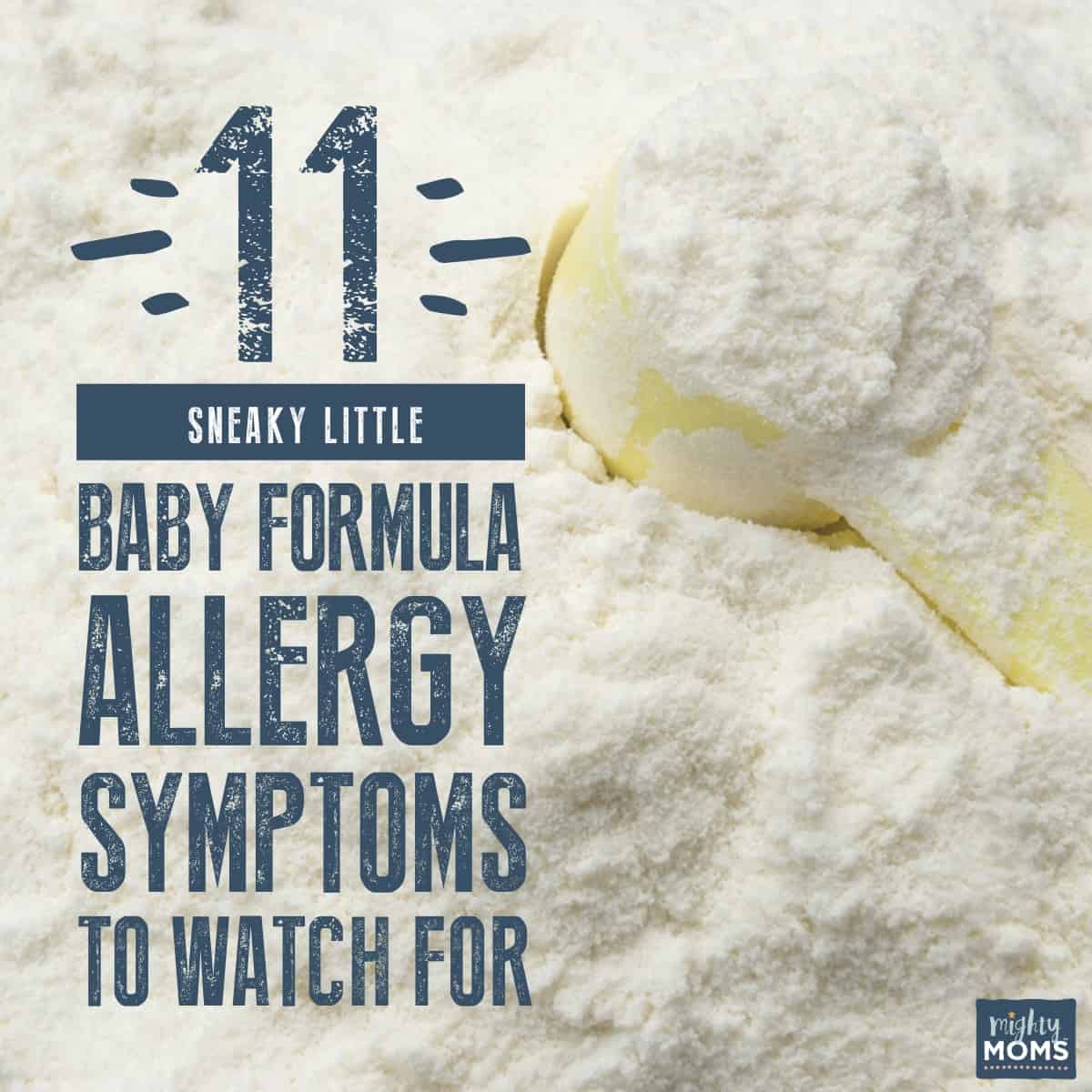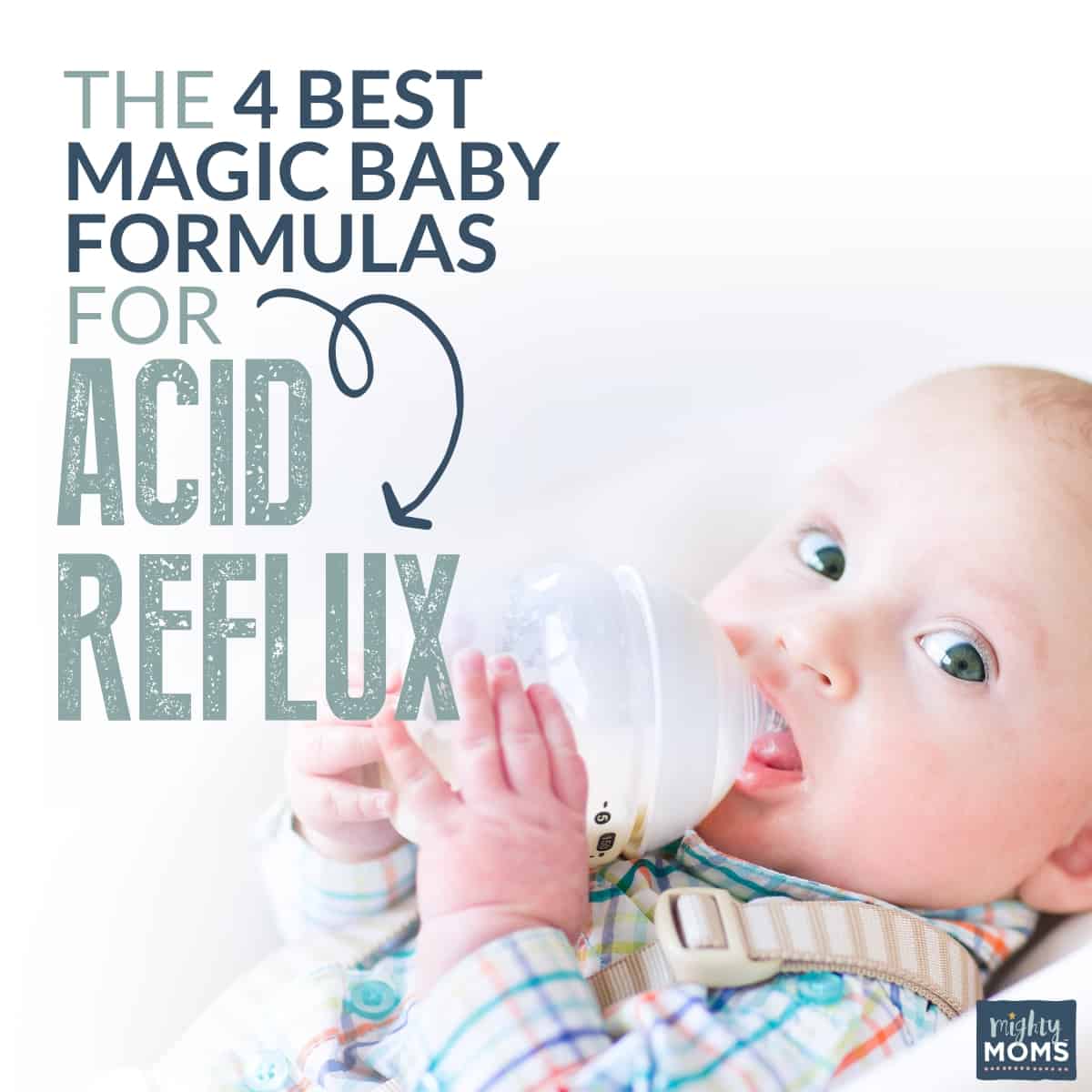In This Article...

Have you felt the tug-of-war of using a hypoallergenic formula?
On the one hand, you’ve heard other parents talk about how magical a hypoallergenic baby formula is: turning miserable monster-babies into giggles and smiles.
On the other hand, you aren’t Bill Gates. Money doesn’t grows on computer trees.
You’ve got a limited amount of funds available. This common problem leaves you with two questions:
- Does my baby really need a hypoallergenic? And if he does…
- Will those hypoallergenic baby formulas really work?
Buckle up, my friend, because we’re about to figure all that out. Here’s how to figure out what your baby really needs.
7 Signs a Hypoallergenic Formula
May Be in Your Future
Let me adjust my turban for a sec.
*squeak* *squish* *flibbbbbbb*
There. That’s better. Peering deep into the soul of my crystal ball, I sense seven indicators that tell me a hypoallergenic baby formula may be in your future.
He doesn’t have to show ALL these signs, just some of them. Don’t forget, though, that the true psychic here is your doctor. Trust him to make the final determination!
Sign #1: Your baby is struggling with acid reflux.
A pre-thickened (and less expensive!) reflux formula can help many babies…but hypoallergenics are also being shown to be a great help for reflux-weary parents.
Sign #2: There is blood in his stool.
You should ALWAYS contact the doctor when you see blood in the diaper. That said, sometimes with milk allergies there may be microscopic bleeding in the diaper you can’t see and only testing will show. (See Step Three below…)
Sign #3: You see snot-poo.
Mucus production is a common sign of an allergy issue in the intestines. This thick stringy mucus will often bridge the folds of the diaper. (Isn’t parenting FUN??!!)
Sign #4: Pooping is a full-body sport he hates.
Inflammation in the intestines can lead to spasm and cramping, which is really uncomfortable. Having a bowel movement can cause babies to cry and pull their knees up during a poop – acting as if they are about to pass a planet, only to reveal soft serve chocolate ice cream.
Sign #5: He has almost constant diarrhea.
It’s the bowel’s way of going on strike. Sometimes this can show up as small squirts – like baby-sized racing stripes in the diaper throughout the day. (On the other hand, sometimes babies already on hypoallergenic formulas can look like they have diarrhea – always check with your doctor on this one.)
Sign #6 She is plagued by eczema.
Eczema (or tiny red raised dots from Hades) can be caused by many things, not just a milk allergy issue – but it’s worth listing. Most babies see marked skin improvements after 2-4 weeks of being on the hypoallergenic.
Sign #7: He sounds like he’s congested all the time.
This is also a sign of reflux, so if your baby seems to have a chronic stuffy nose and wheezing, talk to your doctor about reflux and/or a milk allergy. (Wheezing in particular is something that should trigger a doc-call.)
Why is this Hypoallergenic Baby Formula
so Gosh-Darn Expensive?
What makes a hypoallergenic formula so expensive?
Simple: expertise = expensive. They require more expertise to produce.
To help you visualize this concept, let’s compare a hypoallergenic baby formula to another expertise-required, infamously-expensive product: a pearl necklace. Picture protein strands like long beads on a purty pearl necklace.
You see, babies who are demonstrating the seven signs above don’t handle long protein-pearl necklaces very well. They need those long-strands broken down. The question is, how broken down?
A Regular Hypoallergenic Formula: Smaller Protein Strands
A regular hypoallergenic formula breaks those long strands into smaller sections. So instead of a long protein pearl necklace, you now have several shorter protein pearl toe rings.
This happens when the proteins are partially hydrolyzed. It means the milk proteins have been heated with water to break down those necklaces into extremely small pearl protein chains.
These chains are small enough to slip through the iron-bars of your baby’s cell walls without triggering an Allergy Alarm.
Just so you know… “partially hydrolyzed” is not the same as “partially hydrogenated”. Click here to learn the difference.

A Hyper-Hypoallergenic Formula: Protein Beads
In about 20% of the “protein sensitive” cases, the child’s system still won’t accept those 3-4 protein-pearl strings. So these formulas have to go one step further, breaking those necklaces completely and passing them across one by one.
At this point they are no longer proteins, but are instead amino acids, which (if we can all remember from 8th grade biology) are – all together now! – the building blocks of proteins.
Naturally, these are the most expensive formulas of all – because they are a lot harder to make than the standard formulas like Similac Advance.

Common Hypoallergenic Formula Questions (With Answers Because I’m Nice)
Should I try soy formula first?
Many times babies who struggle with milk protein will have the same struggles with soy. Still, it’s something you could try.
You may want to quickly read through What You Need to Know About Soy Formula. It will walk you through some of the medical arguments for and against.
Is there a cheaper alternative?
If your baby is ticking off all 7 of those signs above, I would go straight to a hypoallergenic. However, if your baby is only hitting a few of those you may want to try a very low-lactose formula like Good Start Soothe.
These formulas have shorter protein-pearl strands than the standard “Sensitive” formulas. Not as short as a hypoallergenic, of course, but it’s a less-expensive option you could try, if his symptoms aren’t too severe.
Can I just switch formulas abruptly?
If your parenting sanity is not in crisis mode, I would recommend introducing the hypoallergenic formula slowly over a period of 2-3 days to prevent upsetting the tummy. Here’s how.
That said if you are at “95% chance of Parental Breakdown” than go ahead and switch. This is crisis management dude. Gotta risk it.
These formulas STINK. Did something die in there?
Surprisingly, no. You can thank that stench to Mr. Partially Hydrolyzed. It’s an after-product. (Which sounds really really gross in that sentence…)
Most babies don’t mind the taste. (Don’t try it. Save yourself.) However, if your baby has swished the formula around the bottle like a wine expert and seems to find it all too bourgeois, ask your doctor if you can add a drop of pure vanilla extract to the bottle.
Is there anyway to lower the price?
The best way to save some serious dinero, once you’ve decided that a hypoallergenic formula is the way to go is just to bite the bullet and buy in bulk.
The best place to do that is Amazon. Not only can you get free shipping if you’re a Prime Member, sometimes you can choose the formulas as a “subscribe and save” item, and they will mail them automatically set to a schedule you choose. (Awesome to avoid 2 am “I forgot we were so close to the bottom of the can!” formula runs.)
When in Doubt…
…give Doc a shout!
These guidelines will help you as you’re trying to decide on a hypoallergenic formula, but sometimes it’s nice to have a doctor looking over your shoulder.
If you suspect your baby’s digestive system is hoisting a rebellion, it may be a good idea to call your doctor and set up an appointment. Just be sure to ask if he needs a stool sample.
If so, be prepared to fish that last dirty diaper out of the diaper pail and bring it with you as an early Christmas present to the Lab Technician. “A gift?? For ME?”
I Love Citations!
Hypoallergenic Baby Formulas. Pediatrics.org
Hypoallergenic formulas–when, to whom and how long. NIH.gov
Hypoallergenic formulas: optimal choices for treatment versus prevention. NIH.gov
Recognizing Acid Reflux/GERD in Infants. Healthline.com
Does My Baby Have Eczema? WebMD.com
We ♥ honesty! This post contains affiliate links that provide extra money for our mutual coffee habits addictions. Click here to learn more. As an Amazon Associate I earn from qualifying purchases.
